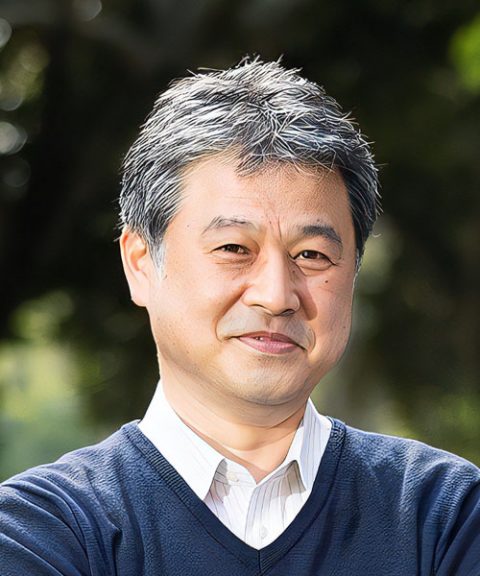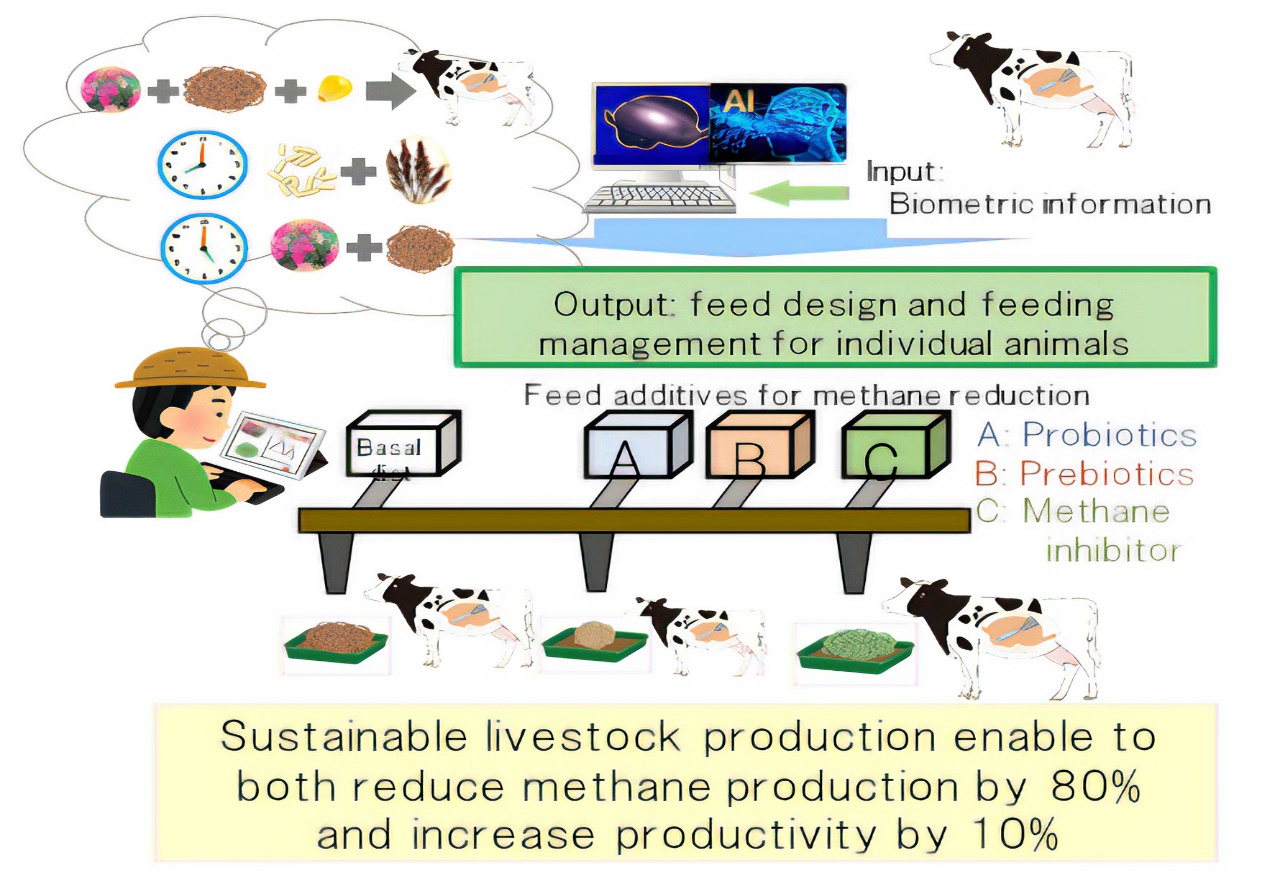Reducing Methane from Cows Will Save the Planet and the Food Crisis
The methane gas produced by the fermentation in cows’ stomach (rumen) is released into the atmosphere as burp, which not only affects global warming but also results in the loss of feed energy. By 2050, we aim to reduce this methane gas by 80%, thereby curbing global warming and improving the efficiency of cow’s milk production by 10%. At the same time, we will contribute to the relief of the human food crisis by constructing a livestock production system that allows 100% of the grain used for animal feed to be used for human consumption, and by spreading this system throughout the world.
Realization of a new livestock production system
to reduce methane by 80 % through complete control
of the bovine rumen microbiome
Background: Why do we need methane reduction?
Moonshot Goal 5 states that we will “develop a fully resource-circulating food production system by fully utilizing biological functions. Here, we aim to completely control the functions of cattle and their gut (rumen) microbiome. The methane produced by microbial fermentation is not only a greenhouse gas, but also a loss of feed energy. Through the control of fermentation, methane can be minimized and more energy can be converted to milk, leading to both mitigation of global warming and improvement of cattle production.
Research topics: How do we reduce methane?
We take on the challenge for developing an individualized feeding system that minimizes methane from cattle. First, we will develop new feeds and additives that control rumen microbiome to strongly inhibit methane. The efficacy of these products will be evaluated using a new device (smart pill) that is placed in the rumen and transmits the fermentation status outside the body in real time. By establishing and expanding the use of a futuristic feed management system that can control rumen microbiome and animal nutrition on an individual basis, we aim to reduce methane and improve animal productivity worldwide.
Hokkaido University has a strong research base for exploration of methane-inhibiting materials, the Japan Science Feed Association for feed manufacturing, the National Agriculture and Food Research Organization for microbiome control strategies, and the University of Tokyo and the National Institute for Materials Science for innovation in smart pills.
Targets by 2030
By 2030, we will develop materials that control the rumen microbiome and reduce methane, and a measurement device (smart pill) that enables constant monitoring of rumen environment (VFA, etc.). Based on the pill data, we will start to propose feeding methods for individual cattle through AI analysis, and apply the newly developed feed for controlling rumen microbiome based on individual programs to reduce methane by 25%.
During the fiscal year 2021, we will (1) explore candidates for microbiome-controlling materials and verify their usefulness, and (2) develop a sensor to measure total VFA concentration, which is a key technology for smart pills, to verify the feasibility of our proposal.
Research organization
Shared research institutes
Hokkaido University / National Agriculture and Food Research Organization (NARO) / University of Tokyo / National Institute for Materials Science (NIMS) / Nagoya University / ZEN-NOH / National Institute of Advanced Industrial Science and Technology (AIST) / Obihiro University / Hokkaido Research Organization
External collaborators
Japan Science Feed Association / Fuso Corporation / Hokkaido Goverment / SDS Biotech K.K.
Project Manager

Dr. Satoshi Koike
Professor,
Hokkaido University
Principal investigators

Dr. Makoto Mitsumori
Director,
NARO

Dr. Toshihiro Ito
Professor,
University of Tokyo

Dr. Takehiro Nishida
Professor,
Obihiro University of Agriculture and Veterinary Medicine
